While I focus on getting the nutrients my body needs from whole food sources, I do consume meal replacement drinks on occasion, such as when I don’t have time for a proper meal or when I’m traveling and don’t have access to healthy food options.
In my case, I follow an animal-based diet and usually opt for high-fat keto meal shakes, which typically utilize whey protein, collagen and/or ghee. Obviously, if you avoid animal products, those drinks are off the table for you.
So for this article, I wanted to identify healthy vegan meal replacement shakes that are made from high-quality ingredients and don’t contain any of the junk (like artificial sweeteners) so often found in plant-based products.
In the end, I only found four shakes that I’m comfortable recommending:
| Calories | Protein | Fat | Carbs | Cost (Serving) | |
|---|---|---|---|---|---|
| #1. HLTH Code | 400 | 27 g | 27 g | 49 g | $1.08 |
| #2. Ample | 400 | 20 g | 26 g | 23 g | $1.75 |
| #3. Basically Food | 500 | 25 g | 31 g | 31 g | $2.50 |
| #4. UNICO Gemini | 180 | 16 g | 6 g | 16 g | $2.55 |
I’ll dive into the ingredients and nutrient profile of each of these below. And I’ll also list a few popular vegan meal replacements that you should avoid, due to their unhealthy ingredients and/or their lack of sufficient calories.
What Makes a Vegan Shake Healthy?
The vegan meal replacement shake market (and indeed, the vegan food market in general) is saturated with unhealthy, super-processed products that you should stay away from.
So when you look for healthy vegan meal replacement options, make sure to keep the following in mind:
Look for products that have:
- Balanced macronutrients (fat, protein and carbs).
- Essential nutrients, such as vitamins and minerals.
- Essential amino acids (vegan protein) to provide fuel for your muscles.
- Healthy fatty acids to keep you satisfied.
- Slow-digesting carbohydrates to control blood sugar levels.
And avoid products that have:
- Artificial sweeteners, such as sucralose and sugar alcohols.
- Added sugar.
- Soy and soy-based ingredients.
- Oats (which are notorious for glyphosate contamination).
Best Vegan Meal Replacement Shakes
#1. HLTH Code
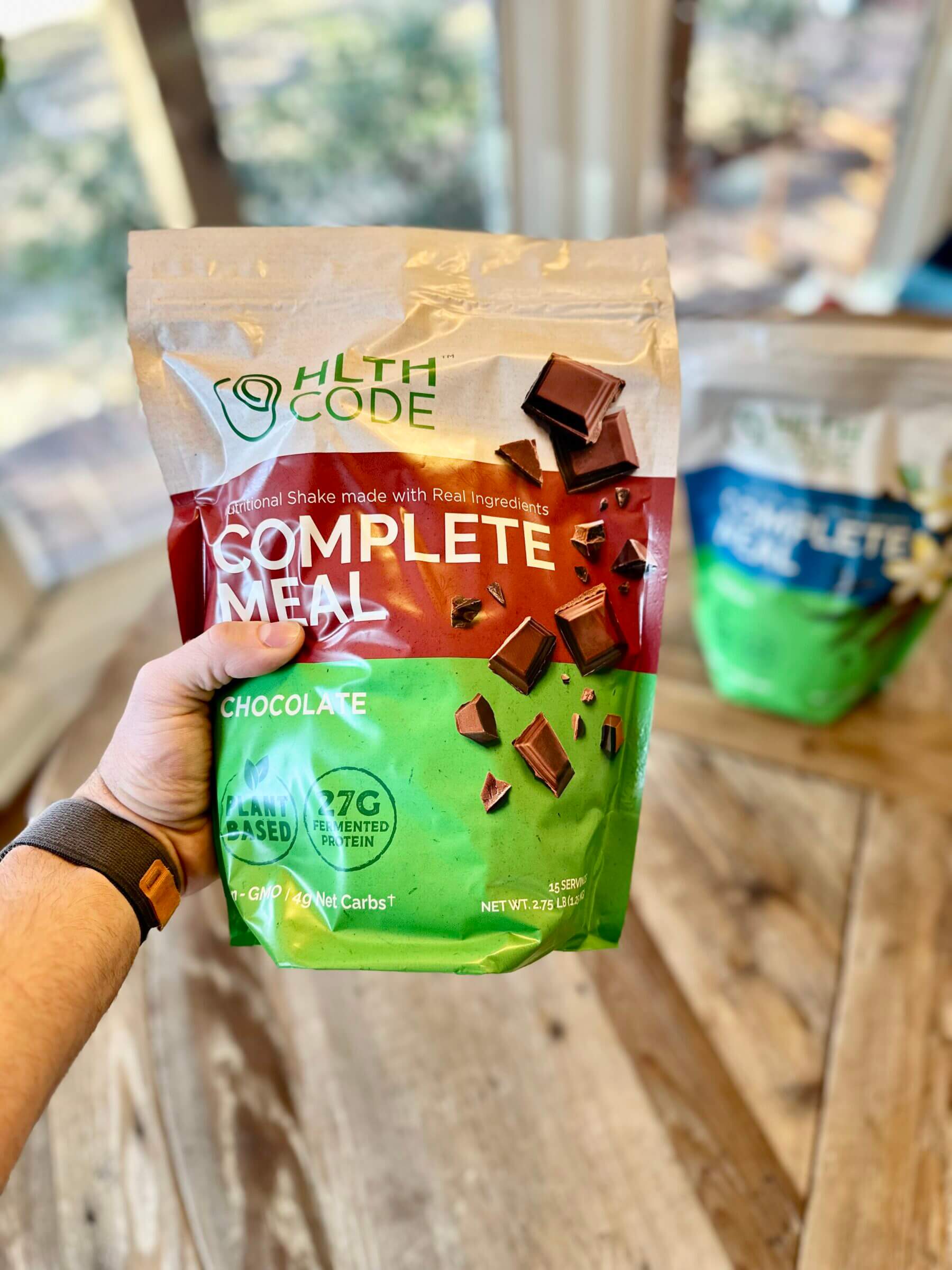
Pros
- Includes fermented plant protein to improve bioavailability.
- 1:1 ratio of protein and fat for optimal muscle protein synthesis.
- Only four grams of net carbs.
- Available in chocolate and vanilla flavors.
- Includes digestive enzymes, vitamins and minerals.
I discovered HLTH Code several years ago as part of my research into keto-friendly meal replacement shakes. Since then, I have frequently used HLTH Code when traveling or as a post-workout shake.
Up until recently, HLTH Code was only available with animal-based ingredients, such as whey protein, collagen and ghee. But the company now offers a purely plant-based (and vegan-friendly) version, and I had a chance to try it.
The main issue with most vegan meal powders is their gritty and earthy texture. Some people like that, but many don’t (myself included). Another other issue with virtually all plant-based meal shakes on the market is their poor protein absorbability and digestibility.
The good news is that HLTH Code addressed both of those issues. Instead of using regular plant protein, the company decided to include fermented pea protein and fermented rice protein. Fermenting the protein dramatically improves the absorbability and bioavailability of the amino acids, and it also makes it taste better.
While that won’t convert me to a plant-based diet, I’m thrilled that those who consume primarily plants now have access to a high-quality meal shake that’s also delicious.
Something else that sets HLTH Code apart from its competition is the 1:1 ratio of protein and fat, which is critical for satiety and optional muscle protein synthesis (i.e., if you use HLTH Code as a post-workout shake).
HLTH Code also has only four grams of net carbs, making it keto-friendly.
Nutrients in HLTH Code
| Nutritional Info | One Serving |
|---|---|
| Calories | 400 |
| Protein | 27 grams |
| Fat | 27 grams |
| Carbohydrates | 11 grams (4 net grams) |
| Sugar | 0 grams |
| Irritating ingredients | None |
| Cost per 100 kcal | $1.08 |
Make sure to use code MK10 to get 15% off your first purchase of HLTH Code.
You can learn more about the product in my in-depth HLTH Code Complete Meal review.
#2. Ample
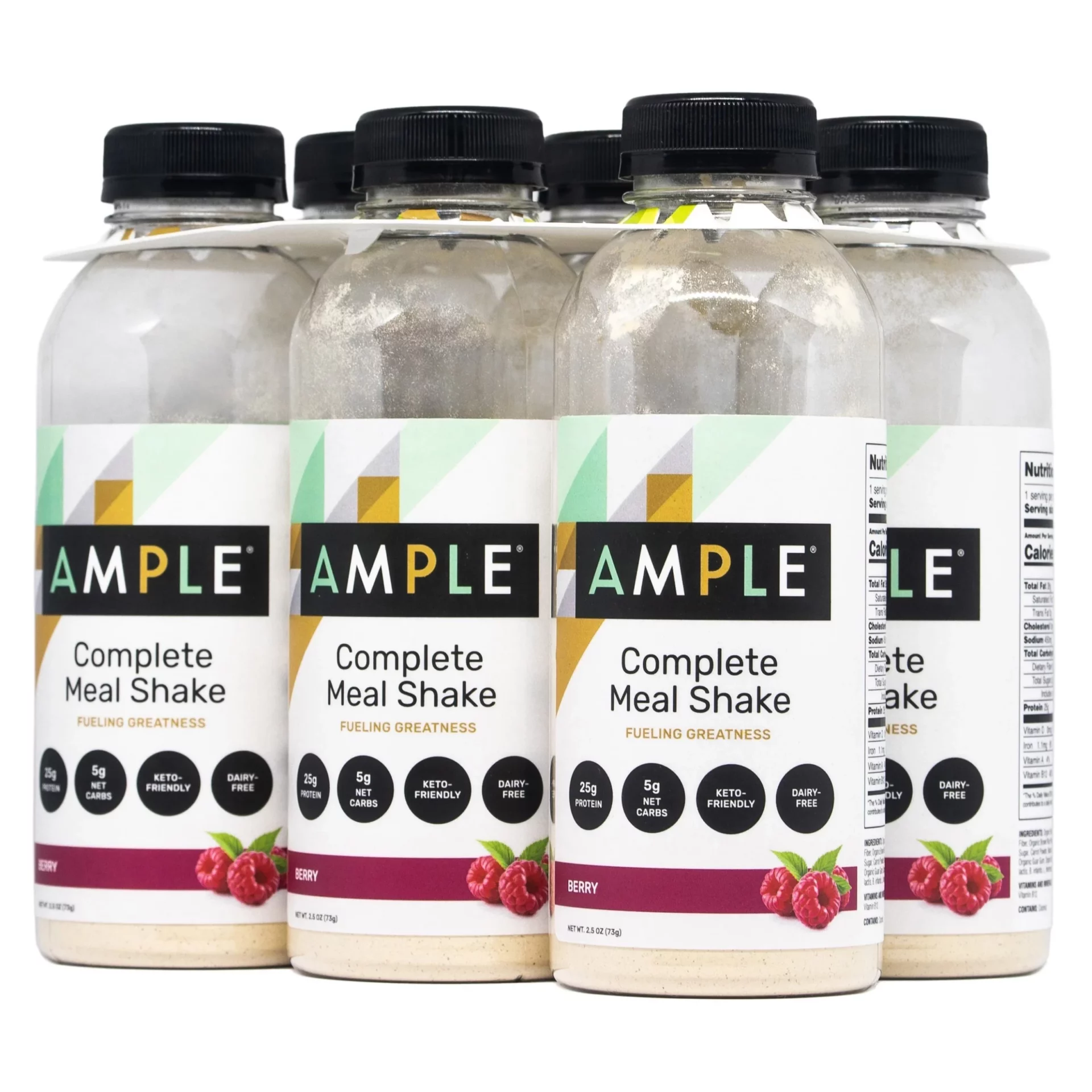
Pros
- Uses only high-quality ingredients.
- Balanced amounts of protein, fat and carbs.
- Gluten-free and lactose-free.
- Low in carbohydrates.
The major difference between Ample’s vegan formula (formerly known as Ample V) and their original formula is the source of protein: while both are derived from high quality ingredients, Ample vegan utilizes unfermented pea and rice protein.
While both pea and rice protein are healthier than soy, be aware that the human body absorbs these plant-based proteins slower than animal protein. Plus, plant-based protein has (on average), a weaker amino acid profile than whey or egg white protein.
Still, Ample offers a solid product with those caveats in mind, considering it contains no junk like artificial sweeteners.
Nutrients In Ample
| Nutritional Info | 400 Cal Serving | 600 Cal Serving |
|---|---|---|
| Calories | 400 | 600 |
| Protein | 20 grams | 35 grams |
| Fat | 26 grams | 33 grams |
| Carbohydrates | 23 grams | 42 grams |
| Sugar | 4 grams | 6 grams |
| Irritating ingredients | None | None |
| Cost per 100 kcal | $1.75 | $1.42 |
To save 15% off Ample, you can use the discount code MK15. You can combine that with Ample’s subscription option, which saves you an additional 10%.
Note: Ample has been out of stock for two years, and I don’t know if or when it’ll go back on sale.
#3. Basically Food (Balance Formula)
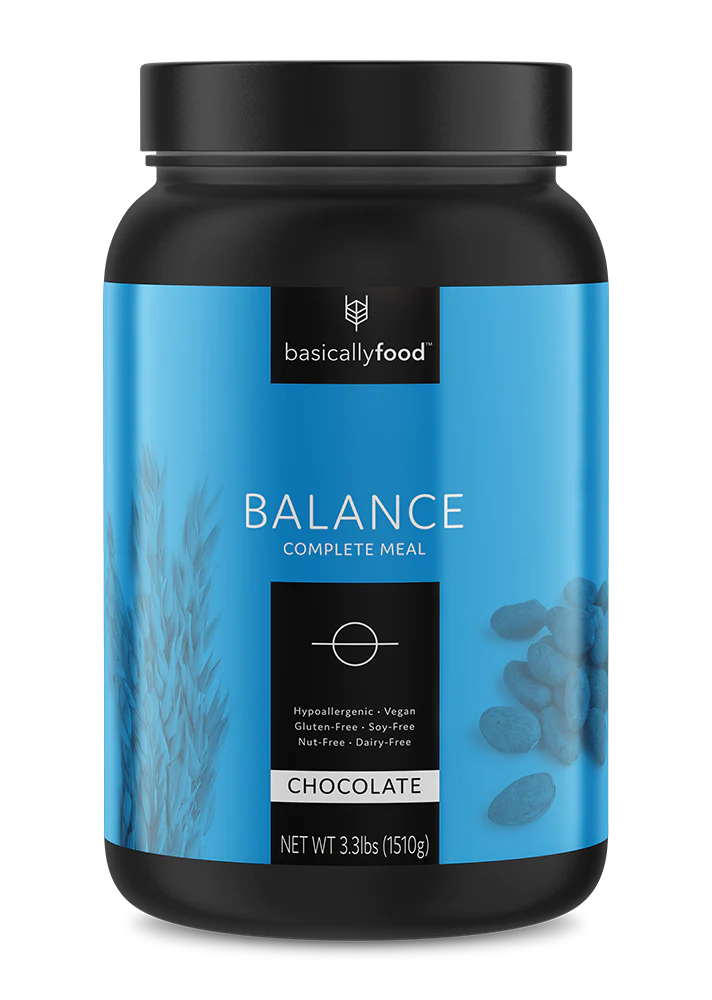
Pros
- Contains zero sugar.
- Excellent blend of macronutrients.
Cons
- Requires two tablespoons of oil to increase the fat and calories.
- Very high price compared to other options on this list.
- Should be refrigerated for at least two hours before consumption.
Basically Food’s Balance formula (which used to be known as Super Fuel) uses a combination of oats and brown rice as its primary source of protein. To bump up the calories and to increase the amount of protein it contains, you have to add two tablespoons of olive or avocado oil before mixing it with water.
The nutritional information below assumes two tablespoons of olive oil, the cost of which I did not include in the cost per serving.
Nutrients In Balance
| Nutritional Info | One Serving |
|---|---|
| Calories | 500 |
| Protein | 25 grams |
| Fat | 31 grams |
| Carbohydrates | 31 grams |
| Sugar | 0 grams |
| Irritating ingredients | None |
| Cost per 100 kcal | $2.50 (without added oil) |
#4. UNICO Gemini
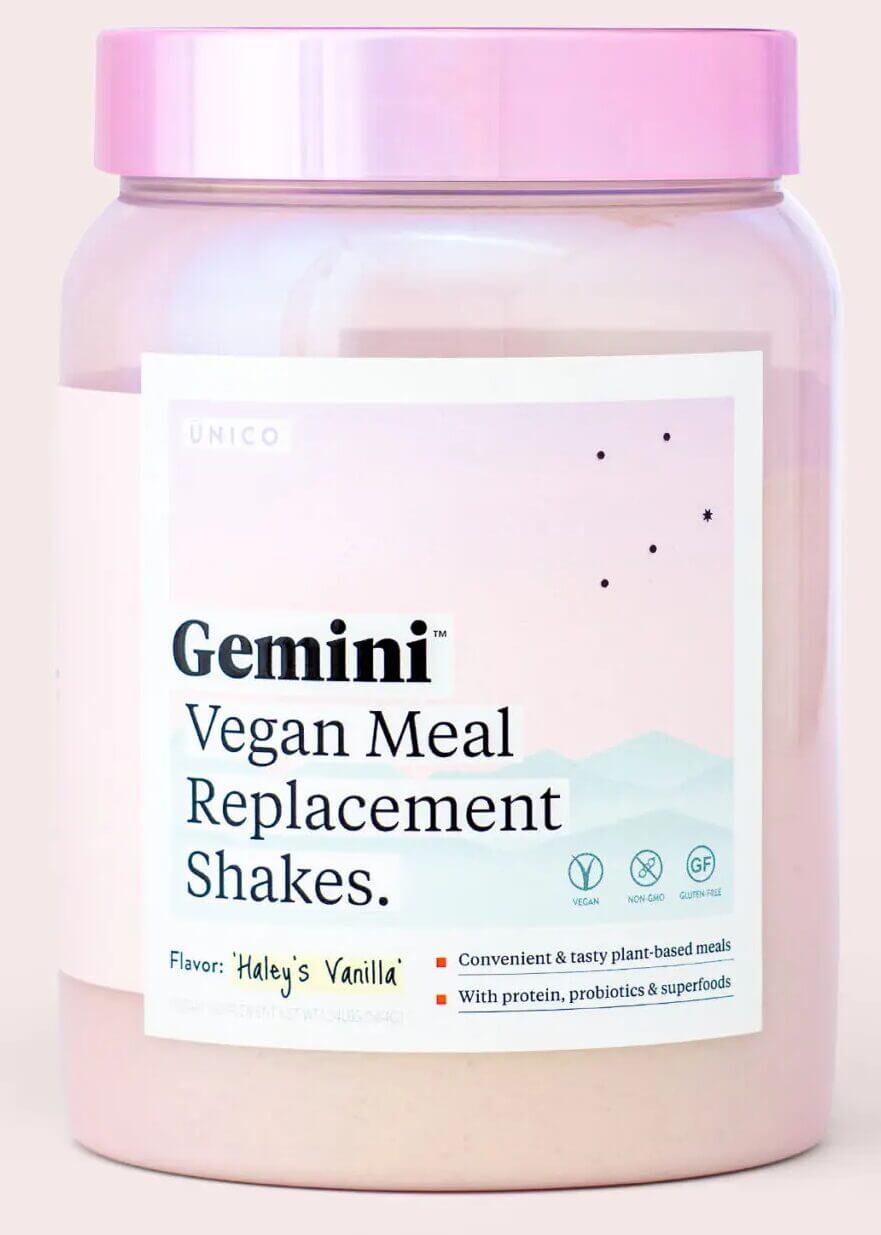
Pros
- Great taste and multiple flavor options.
- Quality formulation.
- Hypoallergenic (soy-free, gluten-free, dairy-free, nut-free and non-GMO).
Cons
- Relatively high price point.
- Carb content is higher than most other options.
- Low in calories.
Gemini is a plant-based vegan meal replacement solution from the Los Angeles boutique wellness brand UNICO Nutrition.
What I like about Gemini is its delicious taste — I tried the chocolate version — and its utilization of a protein blend from three different sources (quinoa, hemp and yellow pea).
Gemini is relatively expensive and doesn’t have a lot of calories because it’s lacking fat. However, the latter can be easily fixed by just mixing it with a few tablespoons of oil, though doing so increases the cost.
Overall, I like Gemini and would recommend it to anyone who follows a vegan lifestyle.
Nutrients In UNICO Gemini
| Nutritional Info | One Serving |
|---|---|
| Calories | 180 |
| Protein | 16 grams |
| Fat | 6 grams |
| Carbohydrates | 16 grams |
| Sugar | 6 grams |
| Irritating ingredients | None |
| Cost per 100 kcal | $2.55 |
If you want to give UNICO Gemini a try, make sure to use code MK10 to get $10 off your purchase.
Products I Don’t Recommend
Below are some popular vegan meal replacement products that you should avoid due to their unhealthy ingredients, lack of calories or both.
Soylent
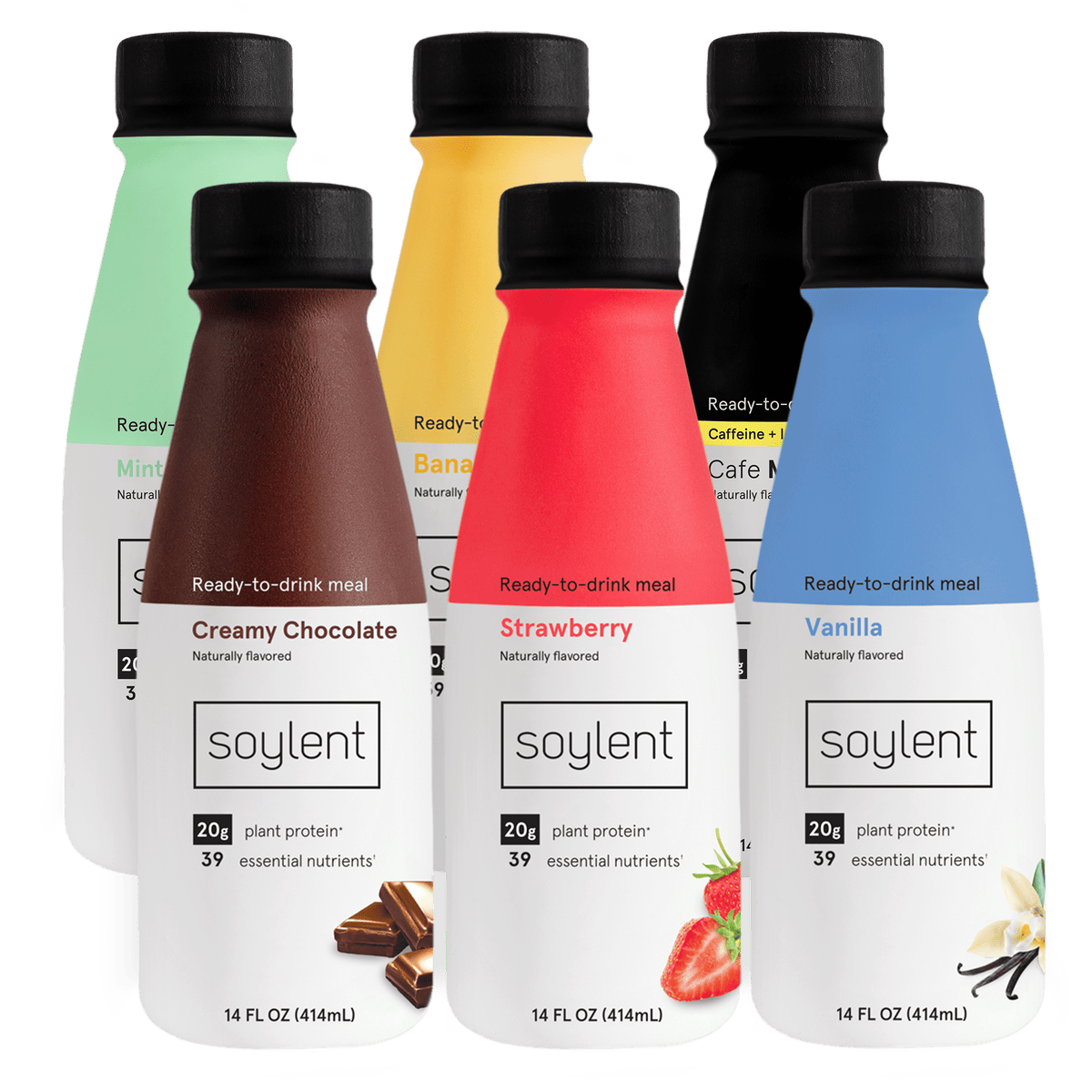
Pros
- Low cost per serving.
- Available ready-to-drink or as powder.
Cons
- Contains cheap and unhealthy ingredients.
- Uses soy as its primary source of protein.
- Has artificial ingredients, including sweeteners.
Soylent was originally pioneered by Rob Rhinehart. Conceptually, it’s based on the idea that one can make nutrition simple, cost-effective and comprehensive.
In practice, Soylent is a vegan meal replacement drink that asks, “What if you never had to worry about food again?” It’s become a successful Silicon Valley business that manufactures an “all-you-need” nutritional shake.
The mission of Soylent is to expand access to quality nutrition through food system innovation. Unfortunately, the company fails miserably in the “quality nutrition” department.
Nutritional Facts
Soylent is very transparent when it comes to its labeling. The company spells out what rules and regulations its ingredients are compatible with (and which ones they aren’t).
Soylent is:
- Vegan, animal-free.
- Lactose-free (Soylent doesn’t contain milk protein).
- Nut-free.
- Certified for Good Manufacturing Practices (GMP).
- Made in the U.S.
Soylent is not:
- Organic.
- Certified kosher.
- GMO-free.
- Free of artificial flavors.
- Allergen-free (it contains soy and gluten, albeit less than 20 PPM of the latter).
Unfortunately — and despite the company’s laudable transparency — Soylent is not a healthy product, as you can read in my Soylent review.
Huel
Pros
- High in protein and low in sugar.
- Non-GMO.
- Low cost per serving.
- Gluten-free and lactose-free.
Cons
- Contains artificial ingredients.
- No organic ingredients.
- Uses oats, which are notoriously contaminated with glyphosate.
With 500 calories per serving, Huel (one of Soylent’s primary competitors) offers a filling meal replacement drink that’s vegan-friendly and doesn’t contain lactose. Its primary sources of protein are oats, peas, flaxseed and brown rice.
If mixed with water, the unflavored version of Huel tastes like oatmeal (when made with water). I consider the taste of oats to be somewhat neutral, but I appreciate that others may want to add some flavor by blending Huel with fruits or cocoa powder.
You could also use nut milk instead of water, but doing so decreases the convenience factor of using Huel while traveling. (The Starter Kit comes with a booklet that contains a couple of recipes that can help you add different tastes to the shake.)
Unfortunately, both the flavored and unflavored versions contain:
- Artificial flavors.
- Guar and xanthan gums.
Here is a detailed list of Huel ingredients for the unflavored and gluten-free version, and here is a list of Huel ingredients for the vanilla-flavored version.
I can handle the artificial ingredients and gums, but I have an aversion to artificial sweeteners such as sucralose. Contrary to popular opinion and previous research, sucralose may change how the body reacts to glucose (for example, after eating carbohydrates).
For this reason — as well as because oats are notoriously contaminated with glyphosate — I would not use this product and don’t recommend it.
Nutrients In Huel Powder
| Nutritional Info | One Serving |
|---|---|
| Calories | 500 |
| Protein | 37 grams |
| Fat | 16 grams |
| Carbohydrates | 47 grams |
| Sugar | 1 gram |
| Irritating ingredients | Yes |
| Cost per serving: | $2.76 |
It’s worth noting that Huel launched a ready-to-drink version to complement its powdered cousin. I haven’t tried that yet, and I probably won’t. That’s because — just like the flavored Huel powder — the pre-bottled drink has sucralose.
Garden of Life Organic Shake
Pros
- Raw organic, gluten-free and lactose-free.
- Rich in micronutrients.
Cons
- Does not replace a meal.
- Contains sugar alcohol as a sweetener.
- Low in fat and carbs.
I’m a fan of Garden of Life products — especially the probiotics they developed together with Dr. David Perlmutter, author of Grain Brain: The Surprising Truth about Wheat, Carbs, and Sugar.
As far as their Organic Shake & Meal Replacement powder is concerned: I think it’s a good vegan protein shake, but it doesn’t replace a meal due to a lack of calories and fat.
For example, you’d have to consume five servings to get the same amount of fat as found in other vegan meal replacement shakes.
To work around that issue, you can certainly add a few teaspoons of olive or avocado oil. That will increase both the fat and calories to acceptable levels.
Nutrients In Garden of Life Organic Shake
| Nutritional Info | One Serving |
|---|---|
| Calories | 120 |
| Protein | 20 grams |
| Fat | 2 grams |
| Carbohydrates | 8 grams |
| Sugar | Less than 1 gram |
| Irritating ingredients | Erythritol (sugar alcohol) |
| Cost per 100 kcal | $1.10 |
Frequently Asked Questions
No, they are not the same. Protein powders are just that — protein. They don’t contain any fat and they shouldn’t contain carbs. As a result, you can’t use protein powder as a substitute for a meal. See my list of the best protein powders for a reasonably healthy vegan option.
Plant-based protein has an incomplete amino acid profile. In other words, vegan protein doesn’t have all the amino acids your body needs to thrive and build muscle. As a result,
It is very unlikely! Even though meal replacement shakes can be a helpful addition to your dietary tool belt, they aren’t meant to be used as an exclusive source of nutrients. I always recommend trying to get all the essential vitamins, minerals and other micronutrients you need from real food.
In other words, think of meal replacement drinks as supplements: they can help you fill gaps in an otherwise healthy diet, but they aren’t a replacement for good dietary habits that center nutrient-dense whole foods.
Losing weight is a byproduct of a healthy dietary lifestyle, which may include (but doesn’t require) meal replacement shakes. If you’re having trouble shedding unwanted pounds, consider addressing these common weight loss problems.
Any food that contains carbohydrates (starches and sugars) raises your blood sugar. Most vegan meal replacement drinks are relatively high in carbs, which is why I prefer keto meal shakes. Unfortunately, keto meal replacement shakes are usually not dairy-free and thus not vegan-friendly.
The good news is that plant protein doesn’t raise your blood sugar the same way carbs do. So don’t worry about how many grams of protein your shake has.
Chia seeds are an excellent source of fat, and omega-3 fatty acids in particular. However, chia seeds are also a source of antinutrients, which mitigate some of their benefits.
Soy protein is highly-processed and inflammatory, and is an overall poor choice for a healthy vegan diet. The reason why many brands use it is because it’s so cheap to manufacture. I recommend staying away from all soy products, including soy protein.
Plant-Based Meal Replacement Shake Options: Final Thoughts
Maintaining a vegan lifestyle can be challenging, especially in situations where you don’t have access to healthy food choices that meet your dietary requirements, or when you’re trying to count calories for the purpose of losing weight.
In all of those cases (and others), vegan meal replacement shakes can help keep you nourished and satisfied. While I don’t follow a vegan diet, I often recommend HLTH Code, which contains premium ingredients at a reasonable price.
What I can’t recommend are Soylent, Huel and Garden of Life.
Soylent and Huel leverage unhealthy and cheap ingredients and should have no place in a healthy diet. Garden of Life doesn’t have sufficient calories to serve as a complete meal, and it contains sugar alcohols (which upset my stomach).
If you decide to give some of the products from this review a try, I’d appreciate if you shared your feedback with other readers and me by leaving a comment below.

Michael Kummer is a healthy living enthusiast and CrossFit athlete whose goal is to help people achieve optimal health by bridging the gap between ancestral living and the demands of modern society.
Medical Disclaimer
The information shared on this blog is for educational purposes only, is not a substitute for the advice of medical doctors or registered dieticians (which we are not) and should not be used to prevent, diagnose, or treat any condition. Consult with a physician before starting a fitness regimen, adding supplements to your diet, or making other changes that may affect your medications, treatment plan or overall health. MichaelKummer.com and its owner MK Media Group, LLC are not liable for how you use and implement the information shared here, which is based on the opinions of the authors formed after engaging in personal use and research. We recommend products, services, or programs and are sometimes compensated for doing so as affiliates. Please read our Terms and Conditions for further information, including our privacy policy.
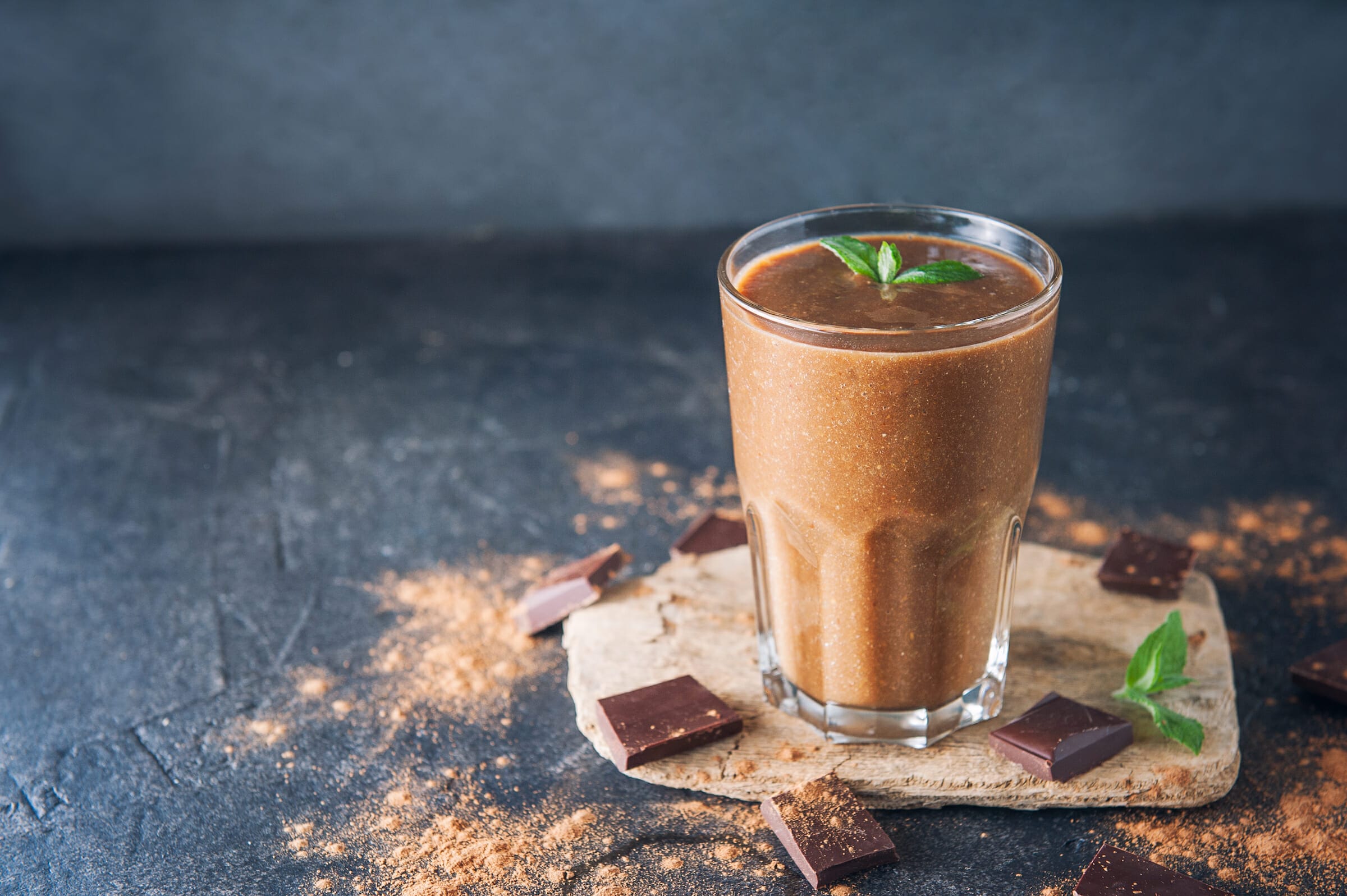
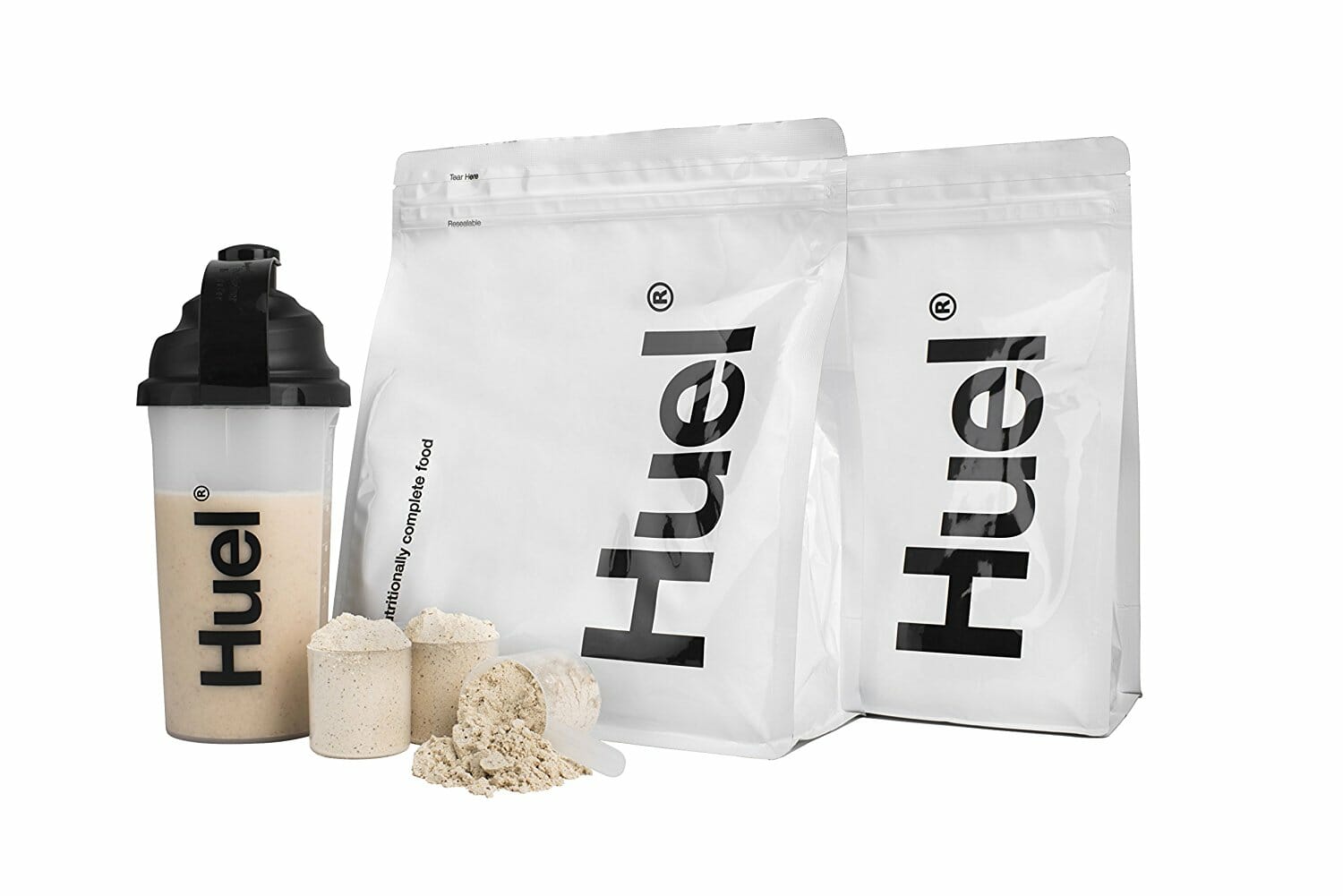
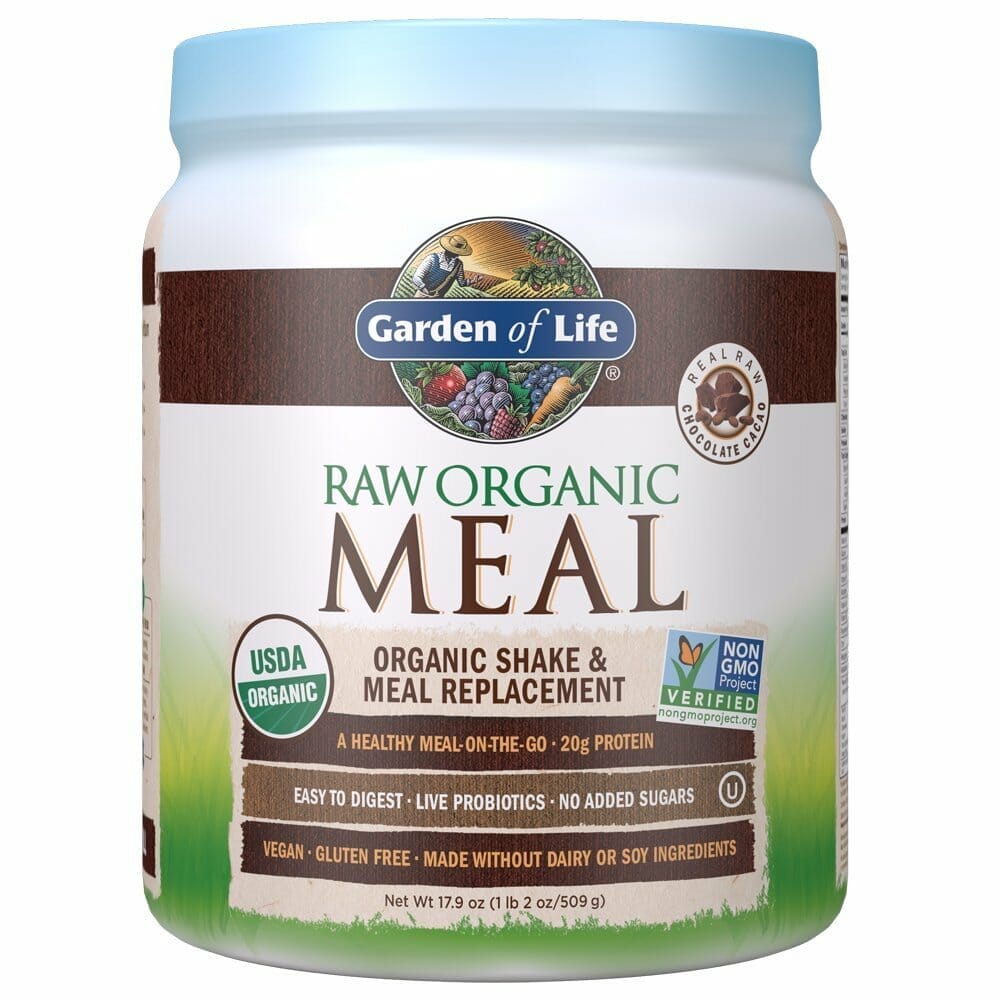

Could you please let me know your thoughts on Biome Secret meal replacement shake? Especially compared to the HLTH Code meal replacement shake. Thank you.
Hi Jenna,
I’d avoid Biome Secret because it has Sucralose which is an artificial sweetener that’s terrible for gut health and blood sugar management. I’m also not a fan of all the gums in the product.
On a side note, I also don’t think drinking that shake will make you lose weight unless you use it to starve yourself.
Cheers,
Michael
Thanks for this great share, unfortunately Pea Protein causes acne in most women (and men) across the board and if you do well with it, likely have good detoxification pathway function. Sometimes it feels like one food trigger is just being replaced for another problematic one… but good info none the less ;)
Yeah, I don’t recommend plant-based protein anymore. I’d use beef protein isolate instead. See https://michaelkummer.com/equip-beef-protein-review/ for a brand I use.
Hi Michael,
I’m so happy to have just found your site! Thank you for your comprehensive, relatable information. There’s a vast amount of content for me to dig into.
One thing, I went to purchase the Vast product and the discount code seems be invalid. Do you have a new one? If not, I’ll still try their product, but it would be nice to have the deal.
Thanks so much!
Teresa
Hey Teresa,
I think Vast disabled all discount code, unfortunately.
PS: Apologies for the late reply. Your comment got accidentally deleted by my anti-spam plugin and I just found out about it.
Hi Michael,
Thanks a lot for this article (and for the other articles on the website). Very clear, detailed and quantified comparison, with claims backed up by published scientific articles. The best review on the topic I have read by far! Considering that food is closely related to health, I believe your article to be super impactful. Thanks a lot, and keep up the good work!
Best,
Florian
Hello, I purchased a bottle of the Ample V and used your code. Thank you for this very thorough and helpful blog post.
Thanks, Aaron! I appreciate your support and hope you’ll like Ample V!
Hi,
Thank you for this strong comparison. I do however have questions regarding heavy metal contents. While I know that some content of it is inevitable and not necessarily harmful, how can one be sure (given the high concentration of ingredients in these shakes), that the quantities are safe? Especially if the brands themselves don’t seem address this questions.
Also, any thoughts or hints about similar products to kachava.com that are delivered to Europe?
Kind regards,
T
Hi Tatiana,
that’s a good question! The unfortunate answer is that is you eat anything that grows in soil, you’ll also eat heavy metals — regardless if they come in a powder, shake or fresh from your favorite farmers market. While the FDA (in the US) has implemented certain standards or “safe limits,” it doesn’t mean that those heavy metals are healthy…they’re often just unavoidable.
Regarding Kachava – I haven’t tried that brand but based on its ingredients label, it seems to be a good protein shake (if you don’t want to eat animal protein) but it’s relatively low in fat and high in net carbs. I prefer high-fat low-carb foods to keep my insulin levels low.
I hope that helps!
Cheers,
Michael
Thank you; this was really helpful and has pretty much settled the argument in my mind about which one to choose – Huel. Unfortunately, I am in the UK and can’t make use of your links. I would question your inclusion of non-GMO and Organic references without the clarification that these are more about lifestyle than nutrition. Neither GMO or Organic ingredients make a difference in terms of nutritional value either positively, or negatively. Extensive, independent clinical trials have demonstrated this numerous times now. That is not to say that I would criticise anyone for wanting to buy organic produce, I just think that it is important not to imply that these products are necessarily of a higher nutritional value.
Hi Gary,
Thanks for stopping by, I appreciate it!
The issue with organic/Non-GMO is threefold:
1) Conventionally grown crops has been shown in studies to contain fewer bioavailable nutrients (see https://ucanr.edu/datastoreFiles/608-794.pdf for example)
2) Conventionally grown produce contains carcinogenic compounds (from pesticides and herbicides) that I don’t want in my body. GMO corn and soy contain proteins that are x-fold more inflammatory than their ancient counterparts
3) It’s bad for the environment
That’s why I pick and recommend organic and non-GMO any day of the week.
Cheers,
Michael